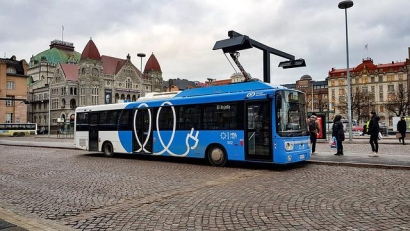
Some cities are taking steps to make their public transportation systems more eco-friendly by opting for biodiesel in their buses or green electricity in their train systems. The inherent affordability of these sustainable energy sources has done little to reduce the high cost of public transportation. Do renewable energy sources have the potential to make public transit more affordable?
More Renewable Public Transportation
The transportation sector accounts for around one-fifth of the world’s CO2 emissions. One of the easiest ways to help to reduce those emissions is to convince people to utilize public transportation that runs on green energy. The first step is to create that public transit infrastructure that uses sustainable energy sources to accomplish this goal. Some are already starting to make that transition. BART — the Bay Area Rapid Transit system in San Francisco — is committing to making its entire public transportation system green by 2045.
BART’s plan starts by planning gradually reducing emissions through 2024. By 2025, they hope to get at least 50% of their energy from renewable sources.
Most green public transportation plans focus on electric vehicles and solar energy, but those aren’t the only options. Hydrogen fuel cell-powered vehicles, such as the 48 buses already on the road in California, can also help to reduce the network’s reliance on fossil fuels. Hydrogen fuel cells aren’t as popular or readily available, but they generate no CO2. Hydrogen is also the most abundant element globally, making it a much more sustainable resource than fossil fuels.
Making Public Transit More Affordable
Initially, renewable energy was a more expensive option, but as the technology evolves, it becomes more accessible and affordable every year. The first solar cell dates back to the 1950s, with the idea of a photovoltaic cell first discovered in 1839. We’ve been trying to harness the power of the sun for decades.
That first solar panel operated at about 6% efficiency. Today, the average home system operates at between 22 and 25% efficiency. While the laws of thermodynamics will prevent us from ever creating photovoltaic cells that operate at 100% efficiency, researchers have managed to achieve 47.1% efficiency in a laboratory setting.
As efficiency climbs, the cost of the technology tends to fall. In 2017, a solar panel cost around $3.17 per watt generated. In 2021, that dropped to $2.77 per watt. A set of solar panels that might have cost $50,000 a few years ago now costs less than half.
Solar isn’t the only green option for public transportation — nor is it the most efficient for anything but electric vehicles — but it is the perfect example of how we can use the downward trending costs of green energy to make public transit more affordable potentially.
Building a Greener Future
Investing in sustainable public transit is one of the best ways to reduce the transport sector’s CO2 emissions, but only if people can afford to use the service and choose it over owning a vehicle. Making the shift toward sustainable energy won’t just help make the transit services more efficient. It can, over time, also allow cities to reduce the costs of their commute without negatively impacting the service itself.
Jane Marsh works as an environmental and energy writer. She is also the founder and editor-in-chief of Environment.co.

